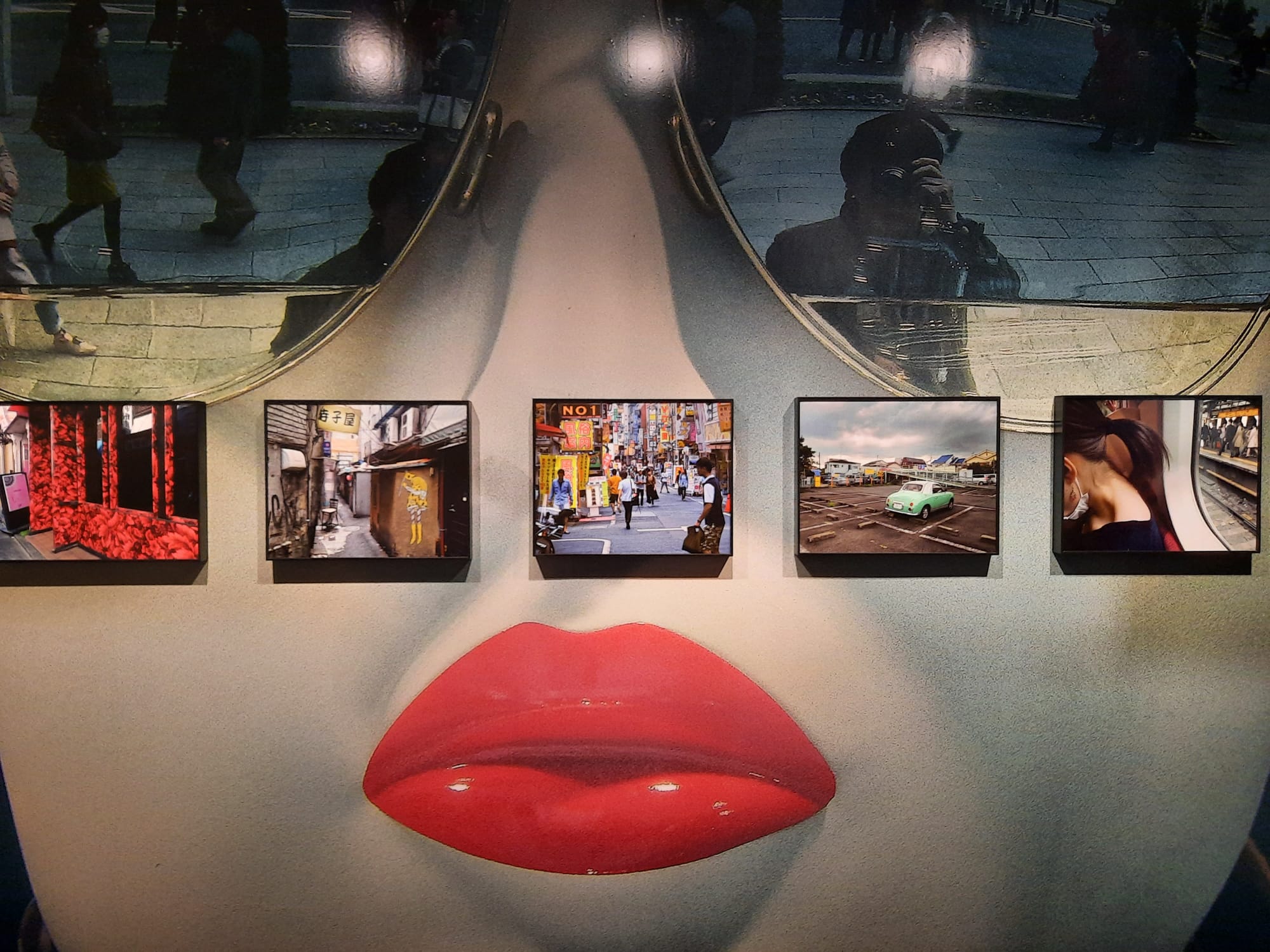Daido Moriyama: A Retrospective – The Photographers’ Gallery, London
Daido Moriyama’s first UK retrospective is a revelation, taking over the Photographers’ Gallery with hundreds of his trademark atmospheric images.
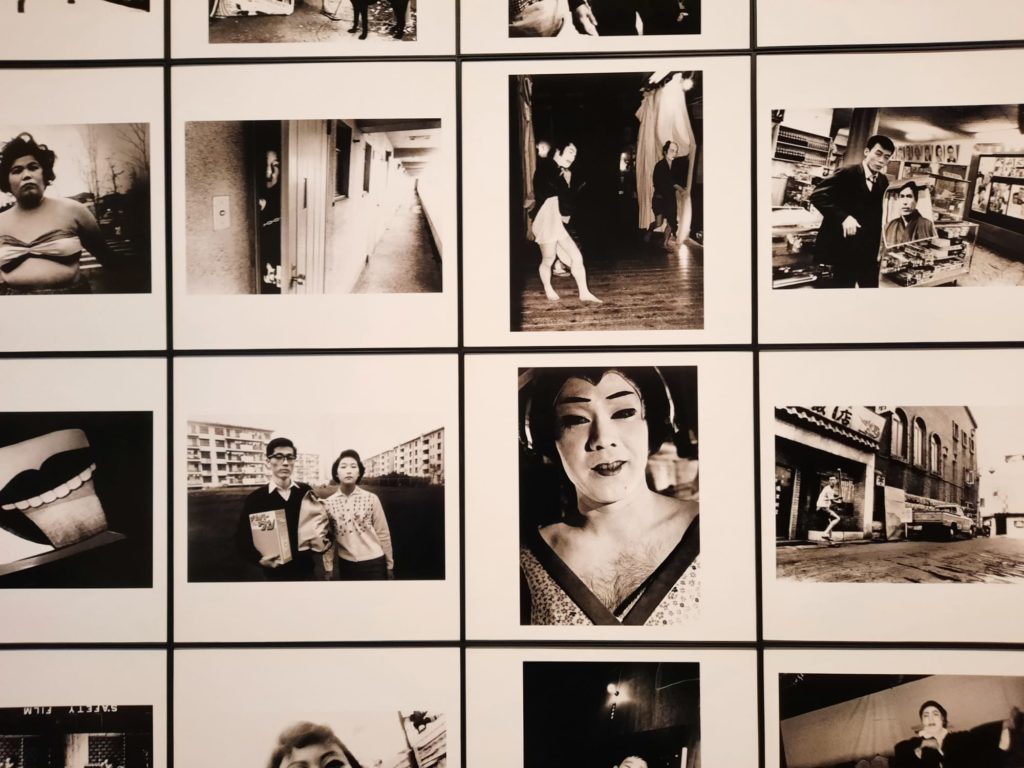
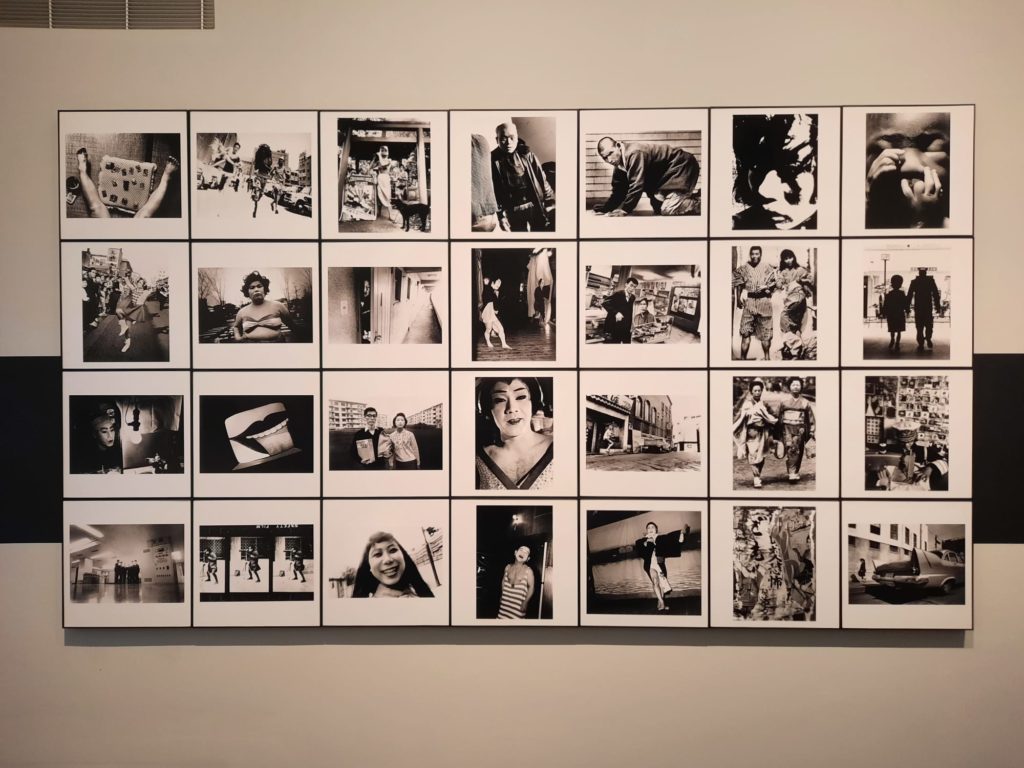
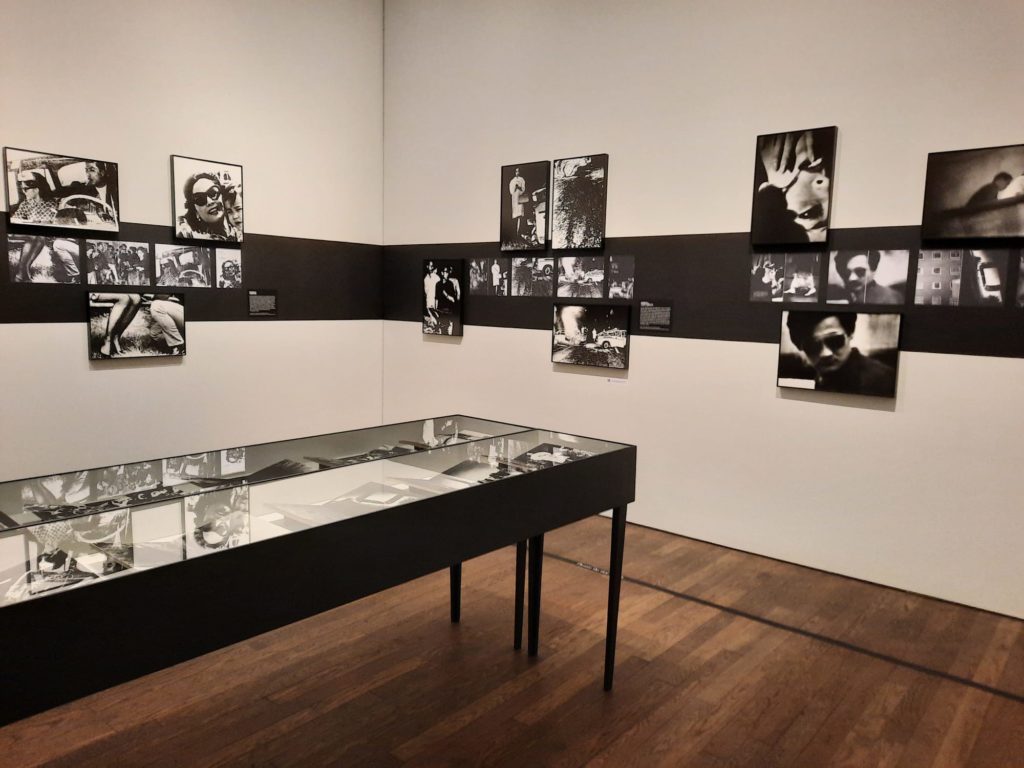
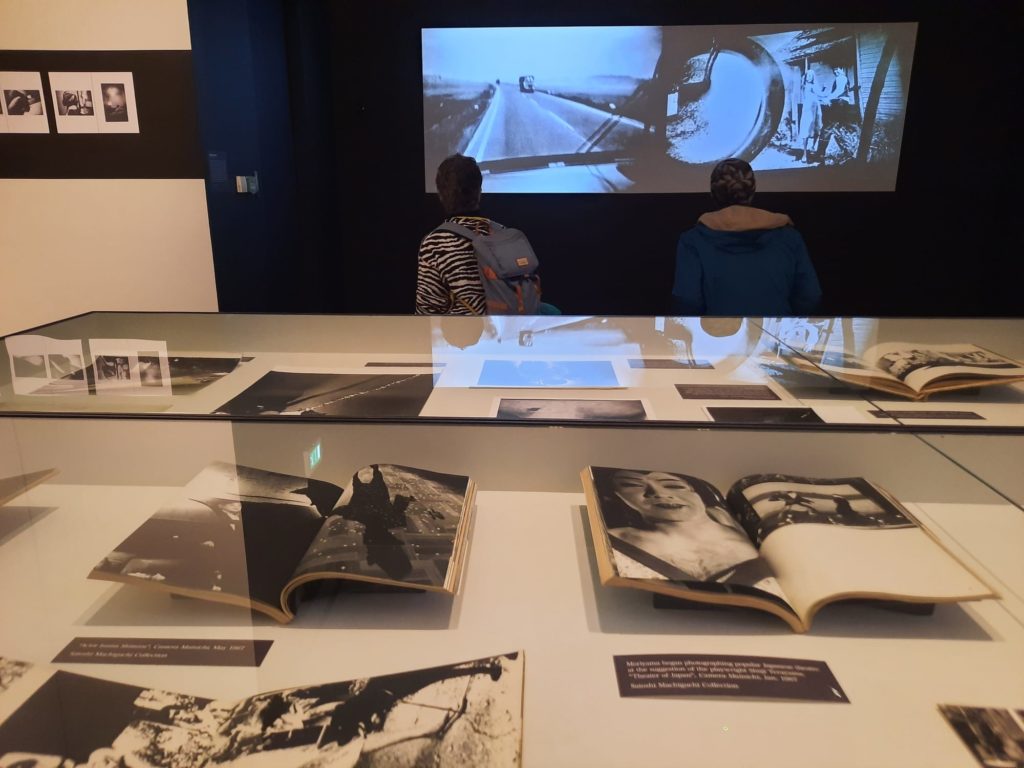
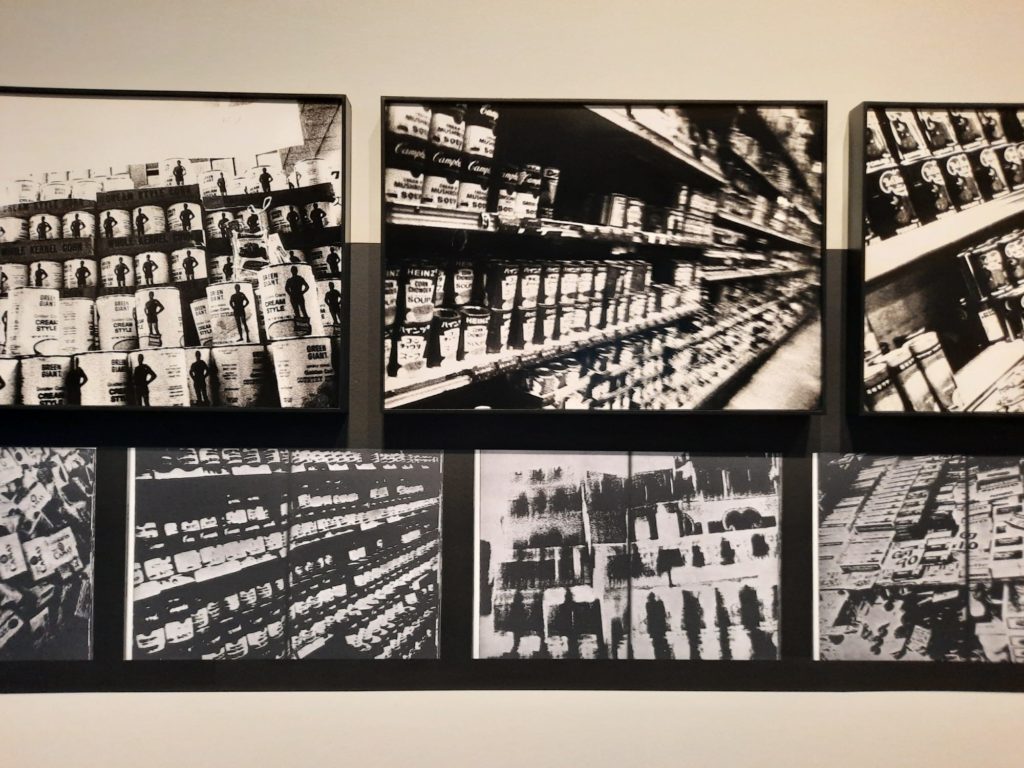
Daido Moriyama
This is the second exhibition of work by a Japanese photographer I’ve seen in London in recent weeks, and both are interesting for how the artists challenge the potential and limits of the medium. But more on this later. First, since today’s exhibition is all about Daido Moriyama (森山 大道, also written as Daidō Moriyama), let’s learn a little more about him.
Daido Moriyama was born in Ikeda in Osaka in 1938. His youth was therefore shaped by the post-war situation in Japan: the American military presence, and a fundamental reshaping of the Japanese economy and society. The mid century was also when a number of (mostly French) street photographers came into prominence. Names which broke out of photographic circles and into the public consciousness, like Henri Cartier-Bresson or William Klein. This movement of photography into the street was an undoubted influence on Moriyama.
But we are getting ahead of ourselves again. The young Moriyama started out in graphic design. He became interested in photography in his early 20s after purchasing an inexpensive Canon. He worked in the studio of Takeji Iwamiya before moving to Tokyo to join a photographic collective. Vivo aimed to confront the transformation of society in their work: another influence on Moriyama although the group disbanded the same year he moved to join them.
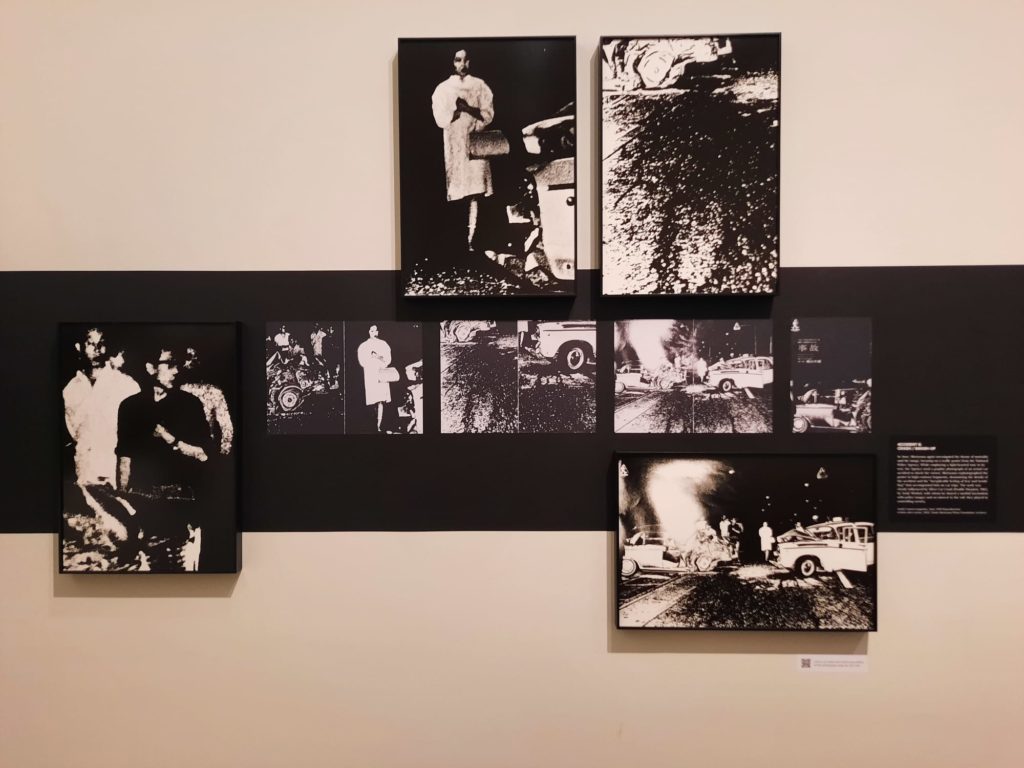
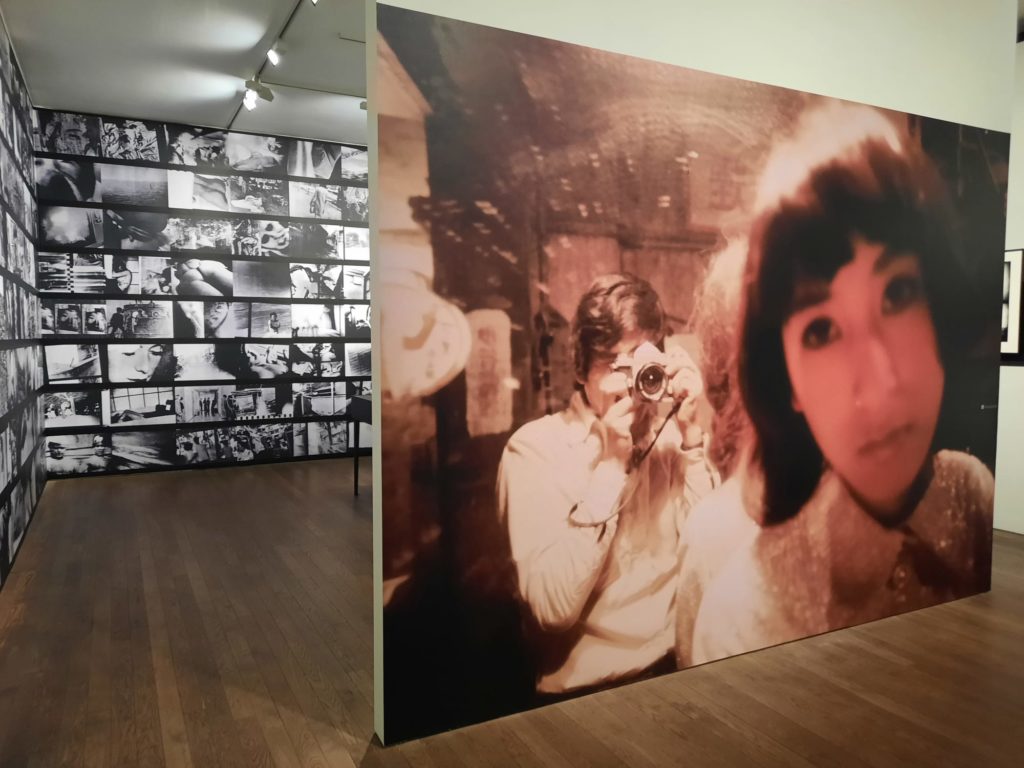



Capturing Life
Moriyama worked for former Vivo member Eikoh Hosoe for a few years, before finally beginning his own path as a photographer. He began to publish photo books in the late 1960s, as well as contributing to photography magazines like Provoke. Provoke popularised a style known as “are, bure, bokeh“, a reclaimed term meaning “grainy/rough, blurry, and out-of-focus.” This term characterises much of Moriyama’s photography: images shot without using the viewfinder, from moving vehicles or in quick succession. When great numbers of these images are presented together, as they are at the Photographers’ Gallery, they give an impression of the pace, confusion, and beautiful chaos of daily life.
Moriyama’s career continues until today. The artist tries to get out to take as many images as he can, and encourages aspiring photographers to do the same. Not to get bogged down in formal rules and processes, but to capture life as it is. Moriyama himself has struggled at times with the limits of the medium. He published Farewell Photography in 1972, a sort of nihilistic breaking down in book form of photography itself. Around this time Moriyama stepped away from the camera, only returning to it at his friends’ urging some years later. He nonetheless has a prolific list of photo books behind him, and has branched out from black and white into colour and moved with alacrity into digital photography.
Throughout all these decades of work, certain motifs and ideas return again and again. Moriyama is constantly pushing the boundaries of photography: what it can capture, and what it can’t. In this, his work reminds me of Hiroshi Sugimoto, subject of the most recent Hayward Gallery exhibition. Both have series in which they photograph reproductions or images, a sort of feeling out of the borders between artifice and reality. There’s an interesting parallel here between Japanese photographers with diametrically opposed styles. In Moriyama’s case this takes the form of a rather Benjaminian habit of making images of images, particularly press and advertising ones.
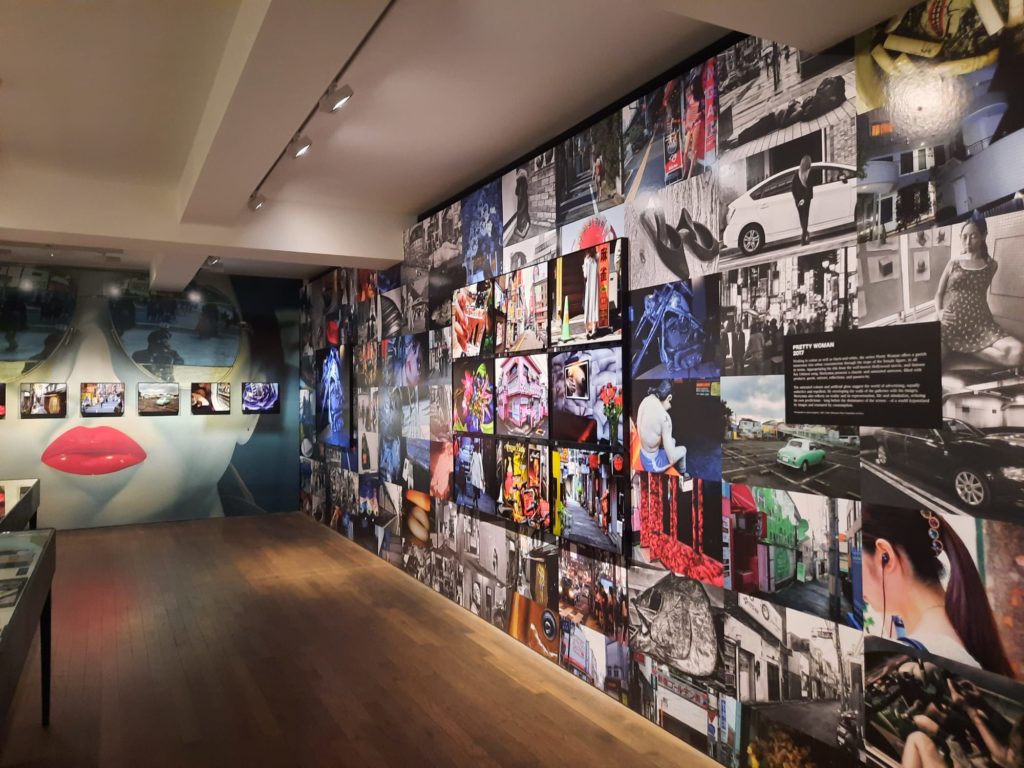
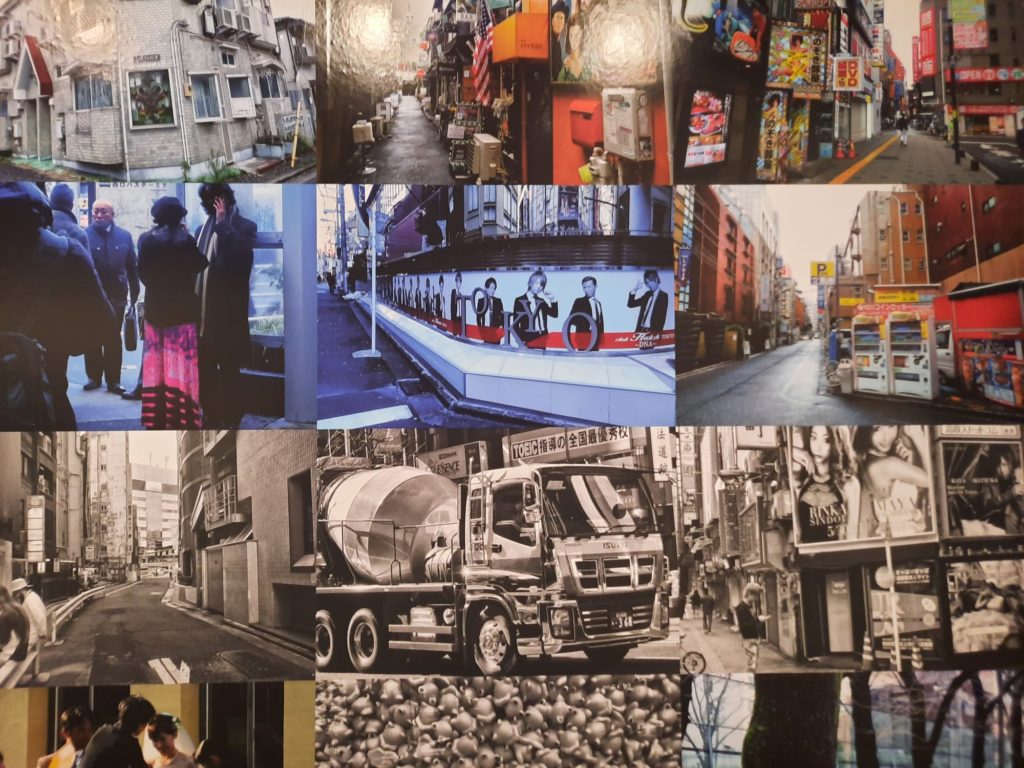
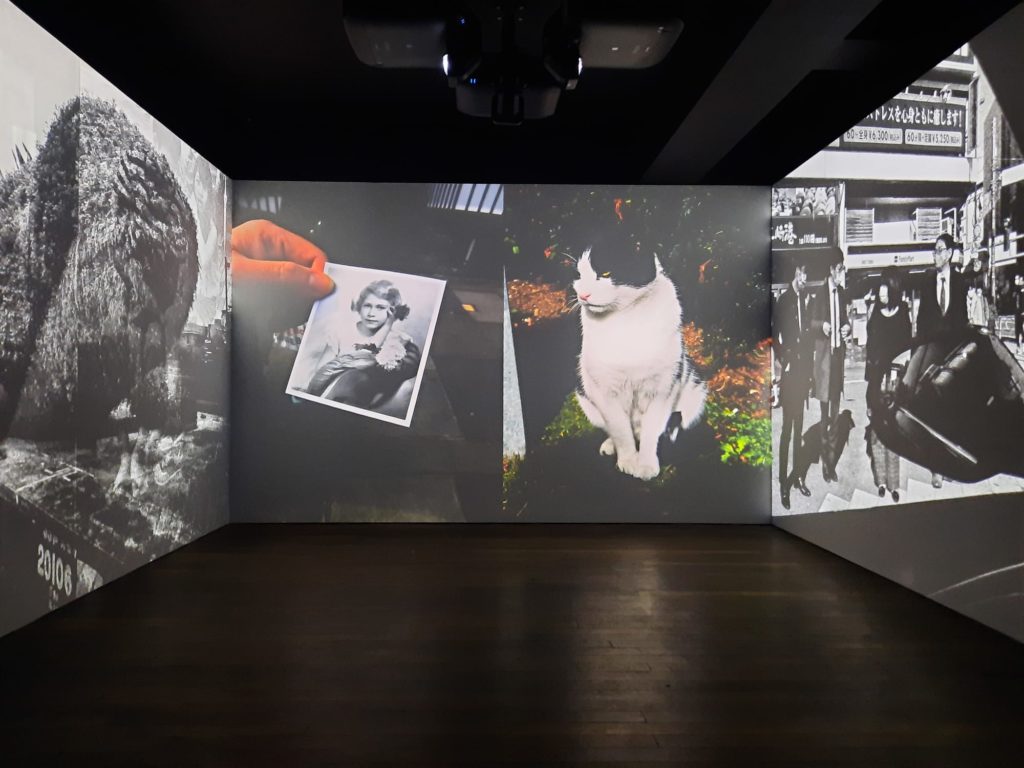

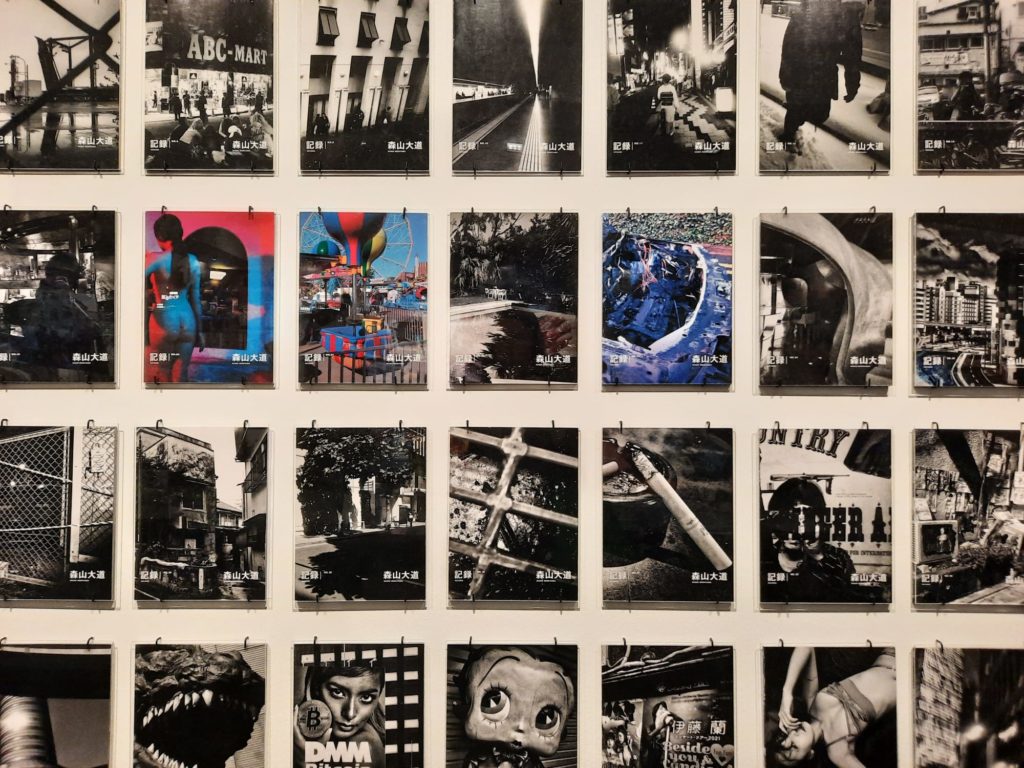
A UK Retrospective for Daido Moriyama
As well as being the first UK retrospective of Daido Moriyama’s work, this exhibition at the Photographers’ Gallery is also a rare occasion in which all four floors of this institution are given over to the same artist. This is important to give a sense of the volume of images in Moriyama’s archive. It’s also interesting to see different series: there is good information provided on several of these including his inspiration, approach, and method of disseminating each series of work. As visitors we get a good sense of how he photographs his own and other countries. And we can also see the changes over the years: from the 1960s to his responses to our contemporary world.
Ultimately, curator Thyago Nogueira has ticked all the boxes of a good retrospective. The exhibition has a good spread of work to help us to understand its subject. It is visually appealing, holding our interest by varying how the works are presented. There are prints, of course, but also images blown up or reproduced across gallery walls, videos, and slide shows. The artist’s voice is also constantly present: Noguiera wants us to understand Moriyama’s own intentions, rather than imposing his vision too strongly on the works. It’s a great way to get to know more about Moriyama, and may have you wondering why this retrospective has taken so long.
Salterton Arts Review’s rating: 3.5/5
Daido Moriyama: A Retrospective on until 11 February 2024
If you see this after your page is loaded completely, leafletJS files are missing.

